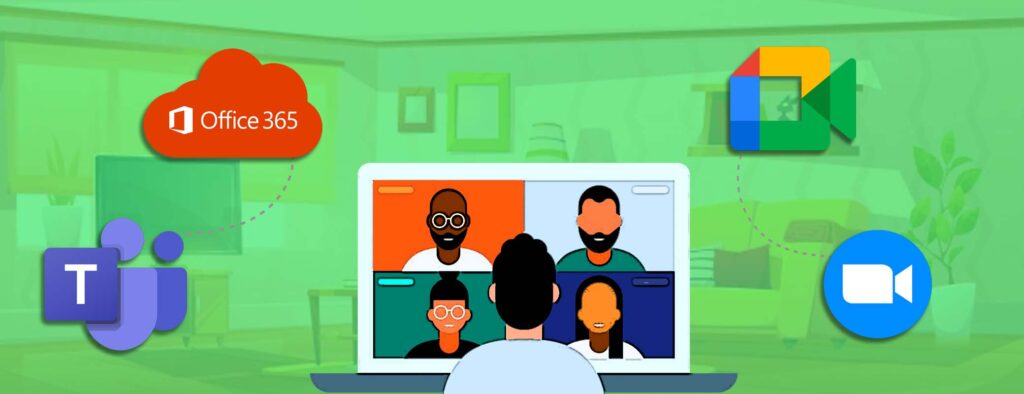The need to work, live and survive in the environment of the Covid-19 pandemic has ushered in innumerable changes to the ways we were doing and conducting things in life hitherto. Many of such methods and methodologies which were exceptions till one year ago have abruptly become new normal during this period and some are likely to stay so for long or permanently so. One of such evolved normal is the new mode of working from home or WFH, its acronym, which has become one of the very common buzzwords these days. The few other common synonyms for Working From Home are remote working and mobile working though not strictly carrying the exact meaning. However, for this discussion, we will stick to WFH as much as possible.
Is WFH a new normal here to stay?
It is not to be misconstrued that work from home is a new concept that was unheard of or was never practiced before pandemic days. It has been in existence for some time though in small amounts and mostly as exceptions. Certain sections of the workforce have worked remotely since the time of the industrial revolution, though not necessarily from home. For example, sales workforces, account executives and customer care teams are often located far from corporate headquarters and spend their time with clients in the field from time immemorial.
In recent years, collaborative software tools that can address varying requirements of collaboration, high-speed internet connections, and as well the corporate efforts to reduce real estate costs, broaden talent pools to include workers who live far from office locations, and attract and retain hard-to-find skill sets have all contributed to growing popularity of WFH among companies. The high-speed internet connectivity, cloud computing and collaborative software tools were already being used by employees to work from home after office hours and during weekends and holidays when they used to work from the office.
‘‘
Organizations today are responding to a new normal, with many knowledge workers now unexpectedly working from home remotely full time.
WFH challenges and concerns
What is worrying most of the companies and their managers is whether these workers are as productive and as innovative as workers in centralised physical offices. How can organisations manage the effectiveness and measure the productivity of workers performing their job remotely without any physical supervision? This is one question that is still bothering many companies and their managers.
Before we dive into the subject of employee productivity and its measurement process, we need to be well aware that WFH is plausible only in certain sectors, segments, and functions of work. While remote working may be practically possible in areas like knowledge works, customer services, service providing, it is virtually impossible to emulate this in manufacturing or facilities management or construction or housekeeping or such similar areas where the physical presence of human beings is unavoidable and non-replaceable.
The above statement is made by being unaware of the fact that Industry 4.0 technologies like AI, IoT, Cloud, Big Data and Analytics can leverage some amount of automation or remote working but the work is not purely a human effort and a WFH mode. We are discussing here humans working remotely and not about robots replacing humans.
Enablement of WFH environment
Organizations today are responding to a new normal, with many knowledge workers now unexpectedly working from home remotely full time. The nature of this transition has sparked a major question: How do we best measure productivity in knowledge workers, and given those impacts, what is the future of mobile or remote workforces? However, I believe that more than employee productivity measurement, the enablement of employees to work remotely from home is the major challenge.
Leadership teams including Chief Human Resources Officers (CHROs) and Chief Information Officers (CIOs) have already enabled mobile workforces through collaborative technologies in many companies and others have been catching up fast. In today’s world, there is no need to lose your connection with your employees just because they work from home. Implementing the right collaboration tools like Teams, Zoom, Office 365, Google Meeting, to name a few, is the first step in enabling and consequently improving the WFH employee productivity. Supporting employees on infrastructure, connectivity, furniture needs, etc. are the other priorities.

Measurement of employee productivity while working from home
This author believes that the apprehension about how to measure employee productivity while working remotely is unwarranted to a great extent. The issue is that many companies and people are finding themselves leading a remote team for the first time, post-Covid. The transition to make managers who are used to having their team all in one place embrace the environment of managing remote teams can be hard and challenging.
Now, coming back to the question of measuring the productivity of employees working from home or remotely, a lot has already been written on this subject by companies that have put WFH in practice, researchers, human resource practitioners, media, academicians, and companies selling productivity tracking and measuring tools. I am taking a very different position on this that the productivity of workers used to be measured when they were working in physical offices too formally or otherwise.
There is not much change needed to be made in the metrics and processes adopted in measuring the productivity of employees working in the physical offices under direct observation of their supervisors or managers to be adopted in the metrics and process of measuring the productivity of work from home workers. The only difference is that tracking and measurement are also remote like the work being measured. These days, with the advancements in cloud computing and availability of high-speed internet connection, using tools and applications remotely has become very normal.
It has been easy to measure employee productivity when you could look out of your office door or bob your head above your cubicle to see what everyone is doing. A good manager can pick up on body language alone whether someone is making progress or struggling but how does that translate to virtual teams? Do you believe that the above style of tracking and measuring work is anything modern and appreciable? Before we dive into the metrics of remote employee productivity, it’s important to put things in perspective.
Some say, when your employees were at their desks, it was easy to spot who was using their time productively. When your employees are working from home, it’s much harder. I beg to disagree with this argument. You should not get tempted to put new metrics in place for your remote employees. Understand that they will still need to do the same steps, follow the same workflows they were doing earlier to achieve the same results. The difference, of course, is that you can’t now see them doing these steps. Also, be aware that it is not the effort or number of hours put in that matters but the outcome, output, and results.
When your sales force was working in the office, you saw them on their phones or searching the internet for leads. They still need to do this, even when working remotely from home. The difference is that you don’t see it.
There were many software tools available and used to track projects, tasks, and measure KPIs. Projects used to be tracked and measured by milestones, timesheeting, KPI benchmarks while the work was performed in a physical office. What companies do in the new normal WFH environment is not much different from what was done when in a physical environment.
So, what is the real issue? Good question!
It’s all about trust
It’s easy to trust your team when you see them every day, and you can see that they are at their desks working. But what about when they are working from home? Are they working, or are they just watching the latest series on Netflix or Amazon Prime or applying for new jobs?
Here’s the thing: A good worker is a good worker, no matter where they are working, whether they are being watched or not. If you know that your team usually performs well, there’s no reason to expect they’re going to suddenly become lazy workers just because they’re working from home without your physical surveillance. Trust them – and more importantly, trust yourself that you made the right decision when you hired them. That is why companies hire for attitude and cultural fit than for the skill set.
The best thing you can do to promote trust with your remote team is to be transparent with them. Communicate with them, keep them up to date with how things are going and expect regular updates from them too, whether positive or negative.
‘‘
If you can't measure it, you can't manage it
- Peter Drucker
Organization is key
One of the most effective measures for managing work from home employees is on what they deliver and not how much time they spend or when they logged in and out. But to accurately measure that, you need to know what your expectations from employees are. This is an integral part of company culture, policies, mission and vision.
Tools to Measure Employees Productivity
There are plenty of remote employee time tracking tools, but I would ask you to be cautious and careful before you use them – for two reasons:
The first is that one of the benefits of remote work is that your staff can work when they’re most productive and that might not be 9-5.
Secondly, it pays to get away from your desk sometimes. Getting outside, for example, has huge benefits for creativity.
That said, there are many remote work monitoring software that are micromanaging tools. You may use them judicially. There are also tools out there that let you view your remote workers’ screens without them knowing. But that’s creepy to say the least.
Encourage communication
One adjustment that you will need to make when managing remote teams is in your communication. We advise managers who are new to remote teams to communicate with the teams as much as possible, because remote work can be isolating, and you don’t want your team to feel overlooked. Comments and feedback on tasks aren’t enough; try and check-in via chat or other media daily to touch base and see how they’re doing.
Avoid micromanagement whether it be of workers working from the office or home. Just don’t because that one thing most employees hate. Even you might have hated it somewhere in your career. We know it can be tempting to check up, especially when they work remotely but if you do that you will do two things; firstly you will keep interrupting your team when they’re trying to do their job, and secondly you’ll make them feel that they’re not trusted and incapable.
Things to consider when evaluating Employee Productivity in WFH
You must be well aware that not all employees’ productivity will be measured by the same metrics. Some employee productivity will be based on things the employee cannot control, such as meetings, answering phone calls, and re-scheduled priorities.
You can help your remote employees work more efficiently by:
Providing the right tools for connectivity and collaboration
Limiting the amount of time the employee spends on things unrelated to his or her tasks like meetings, calls, emails
Having a firm accountability policy and practice in place
Touching base with employees regularly without interfering with their workflow
Having one-on-one’s that allow the employee to address any issues or concerns with his or her work
Providing flexible metrics to measure employee productivity
Providing clear outlines and timelines of each task
Letting each employee see where their projects fit in with other projects
By investing in the required tools, platforms, and mindsets and taking a more data-driven and analytics-based approach to monitoring productivity, innovation and performance, team managers and human resources can position their companies to both recover and thrive as the world returns to work.
A knowledge worker’s productivity will not be one simple measure or formula, as it must allow for the changing nature of work and include both direct and indirect factors. It will also vary based on the nature of the business and industry. An accounting firm might measure accuracy and timeliness of reports and analysis while a technology company would measure not just the output of a DevOps professional in terms of lines of code but also how efficient the code is and how bug-free the code is.
As Peter Drucker said, “If you can’t measure it, you can’t manage it.” And if you can’t manage it, you can’t bring that knowledge into remote workforces and ensure the effectiveness of workers who may no longer be in their supervisors’ line of sight. This is, however, applicable to both environments.

It is more of mindset than metrics
Let me conclude this discussion by stating that measurement of productivity of remote or work from home workers is not any game changer. It will almost be the same way these knowledge workers were measured when they were working from office, only that the mode has changed.
It all boils down to a couple of things which may look off the track; one is that you must have trust in your employees wherever they work from, then that you should hire your employees for their attitude and cultural fit. If you struggle to track and measure the productivity of employees whether in offline or online mode, it shows the misjudgments and errors that crept into your recruiting process.




